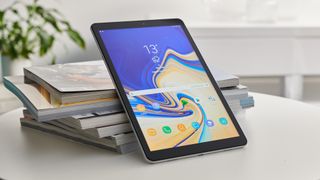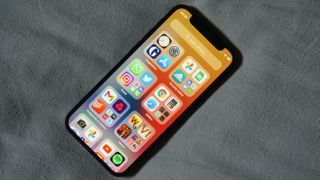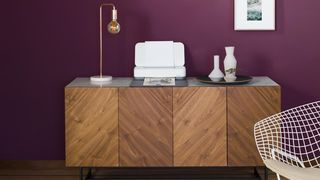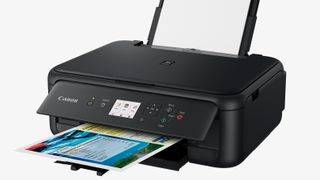It’s the same old story every January – the new year ushers in a time loathed by both kids and parents alike, thanks to a new academic year rearing its intimidating head. Kids are reminded to put away their Christmas presents so they can get ready to hit the books, while parents stress out trying to find the best back-to-school supplies to give their child an edge over the competition.
While some back-to-school supplies haven’t changed – like the reliance on heavy textbooks and the need for stationery – constantly evolving technology has changed the way our kids are taught at school and, more increasingly common in the time of Covid-19, at home as well. Laptops and tablets are becoming bare essentials in a backpack these days, and not just for uni students, while smartphones help keep tabs on your child’s whereabouts.
Even wearables for kids are becoming popular these days, and we’re not just talking about fitness trackers. There are smartwatches designed for younger children so they can call or text a parent without needing to dig out their phones.
With so much tech to choose from, it can get overwhelming for parents to make the right choice. So we’ve created this buying guide of tech essentials to help you narrow down your search for the best back-to-school supplies.
And it’s not necessary to spend too much money either – we’ve listed one premium option and one budget one so you can decide what might be the best choice for you and your children.
Best back-to-school laptops
It might be an expensive proposition for a student laptop but if you’ve got the cash, Apple’s M1 silicon chip makes the new 2020 edition of the MacBook Air one of the best laptops money can buy. It’s thinner and lighter than any of the older MacBook Air models and the new chip makes it a standout performer while also giving it a boost in battery life. In fact, the new chip hasn’t really increased the price of the new MacBook Air very much over the predecessors – it’s still an affordable laptop and comes in cheaper than our top pick for a Windows machine, the formidable Dell XPS 13. Preloaded with macOS Big Sur, the performance of the laptop is top-notch, making it a darn good all-rounder, even for students.
Read our in-depth MacBook Air (M1, 2020) review
This rather good-looking device might fly under the radar if you happen to be searching for a laptop, but don’t overlook the Microsoft Surface Go 2. It’s one of the best Windows tablets available today – all you need to do is add a keyboard to make it a convenient and very portable 2-in-1. It might have some low-cost innards, particularly in the base model, but don’t let them fool you: Microsoft has engineered this device to take on the load of schoolwork and more. Being one of the most beautiful devices on the market, it’s a great balance between style, cost and performance. And, if you think the second-gen Surface Go is a touch too expensive, then you can opt for the original Surface Go, throw in a stylus and keyboard, and save a little cash.
Read our in-depth Microsoft Surface Go 2 review
Best back-to-school Chromebook
Chromebooks are, for the most part, affordable devices running a lightweight Chrome OS. The Asus Chromebook Flip, though, doesn’t quite stick to that definition – it’s one of the most premium options, but then it’s got some truly powerful innards to justify the cost. An Intel Core CPU keeps everything humming nicely and the Full HD 14-inch display makes everything onscreen look good. The Asus Chromebook Flip offers value without compromising on performance, even though it runs Chrome OS – a balancing act that’s not easy to achieve. It’s not a new model either, but it’s still a brilliant performer, with a sturdy 2-in-1 design that’s lightweight and portable.
Read our in-depth Asus Chromebook Flip C436F review
The name gives us the sense that Lenovo couldn’t decide if this was a tablet or a Chromebook, but whatever you want to call it, the IdeaPad Duet Chromebook is a brilliant 2-in-1 on a budget. If just browsing the internet and getting assignments done is the main aim for purchasing a back-to-school device, then this is a very good option that should suit most budgets. The battery has an incredibly long life of almost 22 hours, so if you (or your kids) are burning the midnight oil, it’s highly likely you (or the kids) will pass out before the IdeaPad Duet Chromebook runs out of juice. Admittedly the keyboard is small and the trackpad not too reliable, but these are the little sacrifices that have been made to keep costs down and may not be deal-breakers for you.
Read our in-depth Lenovo IdeaPad Duet Chromebook review
Best back-to-school tablets
For researching assignments and getting some other schoolwork done, the 2019 iPad 10.2 is the perfect choice, but you can also opt for the latest 2020 model for only a teensy bit more in terms of price. The latest version of the iPad 10.2 isn’t a huge upgrade, but it does feature the A12 Bionic chipset that makes it faster than its predecessor. There’s also a 20W charger that ships with the device, meaning it can be topped up faster too. In terms of features, all the greatness you expect from an Apple device are there, although the 1.2MP front-facing selfie camera does seem a little dated for a 2020 model. If that’s not a deal-breaker, then this is the best tablet you can get for your child.
Read our in-depth Apple iPad 10.2 (2020) review
In 2019, Samsung refreshed the Tab A line with a brand new model with a 10.1-inch screen. Its Snapdragon 450 chipset isn’t as powerful as the one found on the iPad mentioned above, but it does have enough power to keep on top of homework or assignments. It runs on Android, so the user experience will be different as compared to an Apple product, but it’s cheaper than getting the 2019 iPad 10.2. There’s no fingerprint scanner on the Tab A, instead security will depend on the user’s password and, unlike the iPad, doesn’t support doodling or writing directly on the screen with a stylus.
Best back-to-school smartphone
It’s all about brand power for kids these days, so if you’re looking to treat your child with one of the best smartphones on the market, then the iPhone 12 mini is definitely in that category. As we mentioned in our review, the iPhone 12 mini is a “dainty delight” that’s perfect for anyone who needs a small handset. Size aside, it’s a powerful phone, although its middling battery life might be a disappointment for some. Apart from that one complaint, you’re getting a great camera, a bright and beautiful OLED screen, the future-proofed benefits of 5G and MagSafe – so this phone should last a few years and offer very good bang for your buck.
Read our in-depth Apple iPhone 12 mini review
Far from looking like a cheap handset, the Realme 6 has some very premium looks and features. It runs Android 10 and, matched with 8GB of system memory, it’s a brilliant performer. Then there’s the 90Hz refresh rate for the display, which is arguably the handset’s standout feature that makes scrolling and gaming smooth and buttery. However, an LCD display instead of an AMOLED screen tarnishes the lustre a little, but costs had to be kept down somehow. However, a 4,300mAh battery means there’ll be plenty of juice to last the school day. There’s also a side-mounted fingerprint scanner for security, although the quad-camera array is a little disappointing when it comes to image quality. Overall, though, the Realme 6 is very good value for money.
Best back-to-school portable storage
It’s incredibly fast and ships with both a USB-C to USB-C and USB-C to USB-A cable in the box, so it doesn’t matter what kind of laptop your kid uses. The Samsung T5 series of portable SSDs come in different colours and in 500GB, 1TB, and 2TB flavours. With average read speeds of about 500MB/s and write speeds of about 350MB/s, it’s one of our favourite storage solutions. If there’s any sensitive information that needs to be stored on the device, or if your kids just want to keep their homework away from prying eyes, the SSD can be password protected if needed. It’s incredibly portable, measuring just 74 x 57 x 10.5mm and weighing only 51g, but all this incredulity comes at a steep price.
Read our in-depth Samsung Portable SSD T5 review
If you’re willing to sacrifice speed for space, then you can snag a G-Technology G-Drive Mobile portable hard drive for under AU$150 for a 1TB option. The G-Drive Mobile also comes with both a USB-C and USB-A cable, so can be plugged into any PC or laptop. Keep in mind that the device has been designed to work with Macs out of the box, but it can easily be formatted to work with a Windows machine without any loss in speed. While not quite as fast as an SSD, it does offer up to 130MB/s speed, which is quite respectable and plenty for schoolwork.
Read our in-depth G-Technology G-Drive Mobile USB-C portable hard drive review
Best back-to-school headphones
No longer the Bose flagship headphones – that honour goes to the very premium Bose Noise Cancelling Headphones 700 – the QuietComfort 35 II is now far more affordable than what it was before. It can usually be found discounted at several retailers, making it a great back-to-school set if your kid needs new headphones. Not only is the sound quality really good, there’s excellent active noise cancellation as well, so you might have to forgive your child if they choose to ignore you while having them on. Battery life is also great, but the cans be used with a cable if juice is running a little low. All in all, great headphones, big brand, relatively affordable now, happy child – ’nuff said!
Read our in-depth Bose QuietComfort 35 II review
It wasn’t quite the ‘budget’ option when it launched, but with the newer Jabra Elite 85t ‘buds just making their way to retailers, the 75t true wireless headphones are now getting cheaper. They’re already available for under AU$200 on Amazon on a regular basis, but we expect the price to drop further, particularly during the big sales. The 75t are one of the best true wireless sets, with good sound quality that can be adjusted via the companion app. There’s also about seven hours of battery life for each earphone, with the charging case adding plenty more despite being a very compact box. The ‘buds themselves are comfortable, and different sized ear tips ship with them in case the fit needs adjustment. They’re the perfect balance between sound, features, usability and, now, value for money.
Read our in-depth Jabra Elite 75t review
Best back-to-school wearables
If you’re worried about your kids safety, the Spacetalk Watch is a great way to stay in touch with them. It’s essentially a phone, a watch and a GPS tracker rolled into one device. There aren’t any apps or games on the smartwatch to distract your kids, not even a camera, internet browser or social media access – it’s been designed so you can maintain contact with your child if you don’t want to give them a smartphone of their own. Your child will be able to call you via the smartwatch or receive calls from you, while also giving you full control over the contact list by letting you block numbers. You can see their location at any time on the companion app, and even set up ‘safe zones’ – if your child steps away from that area, you get a notification. Better yet, there’s an SOS button that automatically dials your number. If you don’t answer, it will go through the contact list until someone does. It’s one of the best wearables for kids made by an Aussie company.
There are a few great choices when it comes to fitness wearables for kids, but the Fitbit Ace 2 makes its way into this buying guide because it suits older children as well – great for kids 6 and older, at least according to Fitbit. The Ace 2 is basically the Inspire in a kid-friendly case and strap, with a rechargeable battery that will last up to five days before needing some time at the mains. It’s water resistant up to 50m, so a bit of rain won’t be an issue, while also doing a great job tracking your kids’ activities and calories. When a goal is hit, the screen displays fun animations. It works well with the Fitbit app and can also support notifications via a vibration motor.
Read our in-depth Fitbit Ace 2 review
Best back-to-school printers
It’s a pretty compact printer/scanner, perfect for small spaces, and works via the HP Smart app available for both iOS and Android devices, and doesn’t need a Wi-Fi connection to set up printing tasks. The Tango works completely wirelessly, thanks to its two-way cloud-based network connection, and doesn’t have any ports to plug in a PC. It’s user-friendly and can be connected to your Alexa or Google Assistant smart speaker (if you have one) for easy voice-activated printing as well. The replacement cartridges, though, can be expensive and, sadly, HP hasn’t brought its Instant Ink program to Australia yet, although it’s been running in the US and Europe for a few years now.
If you’re not too keen on splurging top dollar on a printer, then this option from Canon is wonderfully affordable. At just under AU$70 you can print and scan as much as needed. The printer even has an ‘auto duplex’ feature which automatically prints to both sides of the paper, and setting up a Pixma Cloud Link account will let you print anything sitting in Google Drive, Dropbox, OneDrive or any other cloud service. You can even print from Facebook or Instagram. The Pixma Home TS5160 is covered by Canon’s Print Assist program, where you’ll receive step-by-step instructions on how to set up the device (although it’s easy to do anyway) and any fault found within the first year of purchase will see the printer replaced at no cost.
Miscellaneous
Ports on new laptops are changing. The faster USB-C or Thunderbolt ports are slowly and steadily becoming the norm. So if you child’s new laptop doesn’t have the ports needed to plug in, say, a USB 3.0 cable, then this Satechi hub offers 7 different ones, and includes an SD card reader, a 4K HDMI port and a Gigabit Ethernet port. All these ports come at a price though and it’s definitely not the cheapest option, but it is one of the best. The ports are spaced out nicely, so plugging something in won’t require juggling cables and wires.
It might be a tad bulky but there’s no better portable charger than the Anker PowerCore 20100. The large capacity means your kids’ handheld devices won’t run out of juice, particularly during crunch time. If your kids’ phones and tablets support high-speed PowerIQ or Voltage Boost, there’s quick charging available as well. The fast charging is not quite as efficient as Qualcomm’s QuickCharge technology, but the Anker PowerCore 20100 is still one of the best you can get. It’s also great value for money as it costs well under the AU$100 mark in Australia.
Read our mini review of the Anker PowerCore 20100 portable charger
If your child has an artistic streak and is interested in taking a photography class, the Canon PowerShot G7 X Mark III is one of the best compact shooters on the market. It’s great if your child is interested in becoming a YouTube star, with 4K video quality really good. The little camera has a mic port for sound, and live streaming capabilities to YouTube available on board. There’s also a built-in ND filter to manage bright lights, and the flip-up LCD display is a vlogger’s dream. If it’s stills your child is keen on, this camera will grow with them, with the manual mode allowing kids to hone their skills. There’s no viewfinder here but for under AU$1,000 it’s a great buy.
Read our in-depth Canon PowerShot G7 X Mark III review
From the company that brought us the interactive Star Wars bots comes these little connected toys that put education front and centre. The Sphero Mini (a tabletennis-sized ball) and the Sphero Bolt (a bigger, rolling robot with a display) are remotely controlled toys that can help kids learn to appreciate science, technology, engineering and mathematics (or STEM) that the Australian government is heavily investing in right now. While they’re a whole load of fun for both kids and grown-ups alike, you can also write code that dictates the actions of the Sphero. There are plenty of lessons to choose from and there is a huge amount of satisfaction to be had to see your creation come to life when the toy begins to move. The Sphero Edu app also allows you to try out other people’s code if you or your child aren’t keen on creating your own. Coding, though, is very simple and requires no prior computer technology knowledge.
Parents should be aware that if you get the Sphero Bolt for your child, the accompanying Sphero Play app has a Scream Drive setting that makes the Bolt move faster the louder your kid screams or shouts at it (it’s a lot of fun for the kids but not so much for everyone else).
Read our in-depth reviews of the Sphero Mini and Sphero Bolt




















Comments are closed.